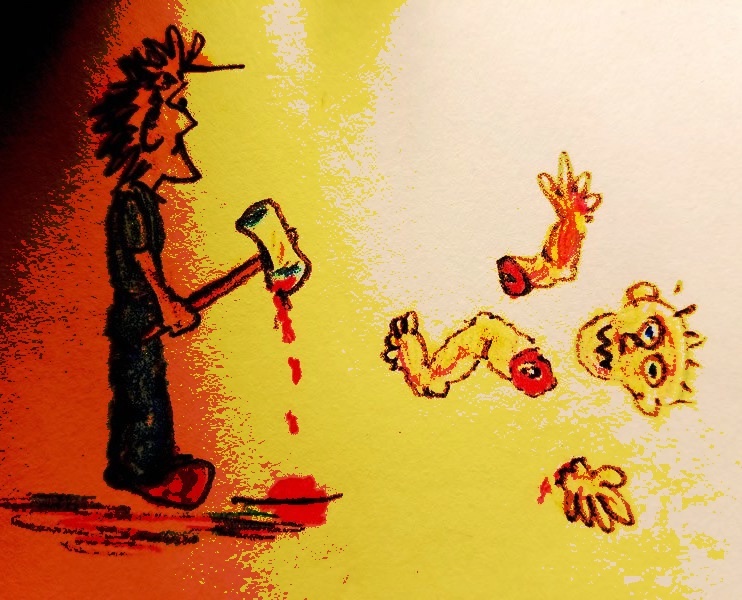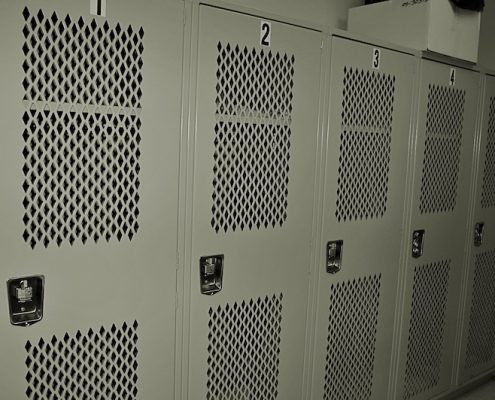Proper evidence collection is a must if your protagonists have any shred of hope of winning a murder case in the fictional courtrooms you’ve fabricated solely from ink and paper.
In fact, the only chance your DNA DA has is to present fact when testifying to the make-believe judges and juries you’ve concocted in those fantasy worlds that live in the far corners of your twisted minds.
So here are a scant few basics to correct the errors I’ve found lately while reading during my personal graveyard shift, otherwise known as the hours between midnight and three when insomnia pulls my eyelids wide open.
Anyway, here’s how to properly collect and store the follow items of evidence (please do not use television as a source for this stuff!):
Cigarette butts – Do not use bare hands to collect. Instead, used gloved hands or forceps. Do not submit ashes. Always air dry the butts before packaging and, to preserve DNA, do NOT package in plastic bags or other plastic containers.
Chewing gum – Collect using forceps or gloved hands. As with cigarette butts, air dry and then place into a clean paper envelope or similar packaging. Never use plastic bags or other plastic containers. Plastic acts as an incubator for bacteria, which could degrade or destroy DNA.
Hair – Use caution to prevent damaging the the root ball. Collect gently, using clean forceps (clean, to prevent cross-contamination of DNA). If the hair is wet or damp, air dry before packaging in paper with edges folded and sealed, or place and seal in a paper envelope.
 Human or animal tissue – Collect approximately two cubic inches of red muscular tissue (if possible). As with other DNA evidence collection of solid material, use clean forceps or gloves. Remember to change gloves when handling different items to avoid cross-contamination. Place the tissue in a clean, airtight container. Never use formalin or other preservatives such as formaldahyde. When shipping to a testing lab, freeze the sample and send via overnight transportation service, packed in dry ice in a styrofoam container, or hand deliver.
Human or animal tissue – Collect approximately two cubic inches of red muscular tissue (if possible). As with other DNA evidence collection of solid material, use clean forceps or gloves. Remember to change gloves when handling different items to avoid cross-contamination. Place the tissue in a clean, airtight container. Never use formalin or other preservatives such as formaldahyde. When shipping to a testing lab, freeze the sample and send via overnight transportation service, packed in dry ice in a styrofoam container, or hand deliver.
 Bones and teeth – Use forceps and/or gloved hands for collection. Collect whole bones if possible. Place bones and teeth in paper containers with sealed edges. Store out of light and humidity, and may be frozen if samples are previously air dried.
Bones and teeth – Use forceps and/or gloved hands for collection. Collect whole bones if possible. Place bones and teeth in paper containers with sealed edges. Store out of light and humidity, and may be frozen if samples are previously air dried.
Blood and saliva – Store out of light and humidity, and may be frozen if samples are previously air dried.

Only 1 Week Remains to …
RESERVE YOUR SEAT AT THIS UNIQUE EVENT FOR WRITERS !
Are you searching for the proper details and the perfect words to describe a scene or character? Well, here’s the solution to your troubles. Sign up today to learn from some of the best in the business!!

www.writerspoliceacademy.online



 In those days there wasn’t a lot of consideration for sterility, and DNA hadn’t yet made its way on the “scene.”
In those days there wasn’t a lot of consideration for sterility, and DNA hadn’t yet made its way on the “scene.” Items that could be cross-contaminated must be packaged separately. There’s a rule of thumb for other types of evidence, too, and here’s a handy list for the proper packaging of those items.
Items that could be cross-contaminated must be packaged separately. There’s a rule of thumb for other types of evidence, too, and here’s a handy list for the proper packaging of those items.
